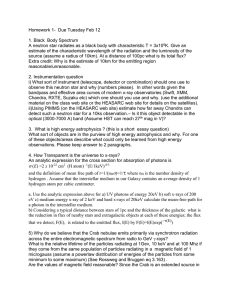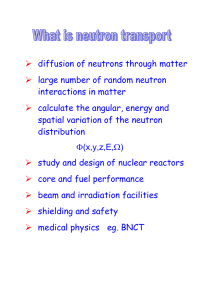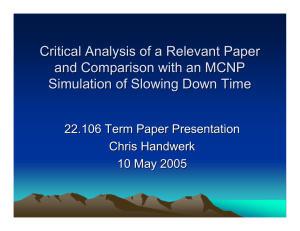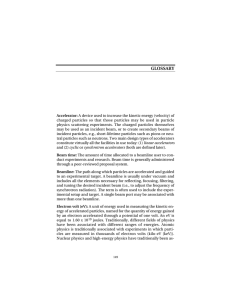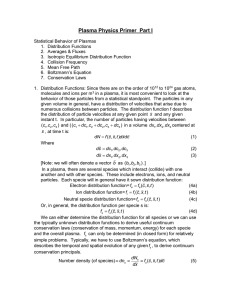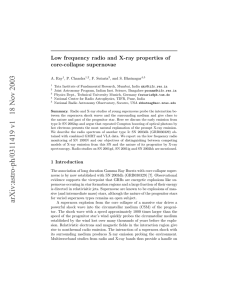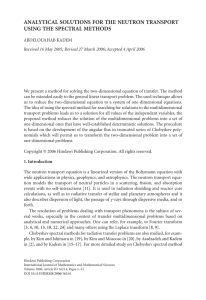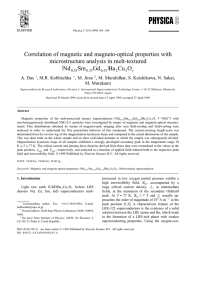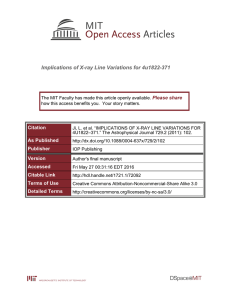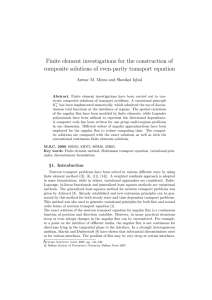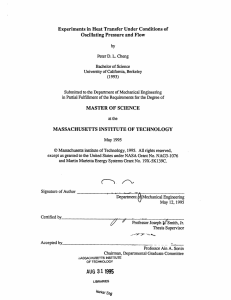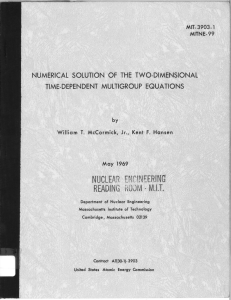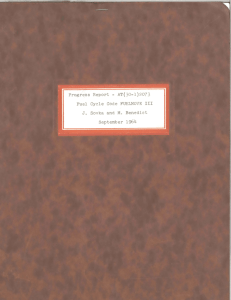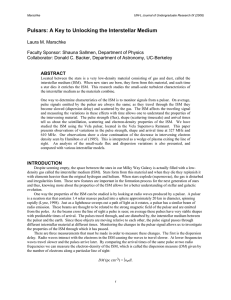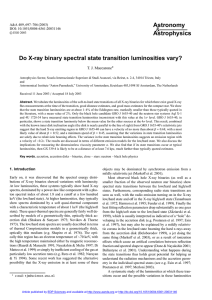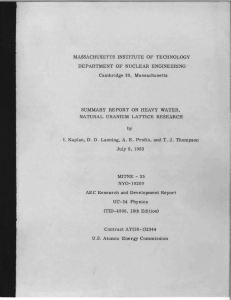Homework 1- Due Tuesday Feb 12
advertisement
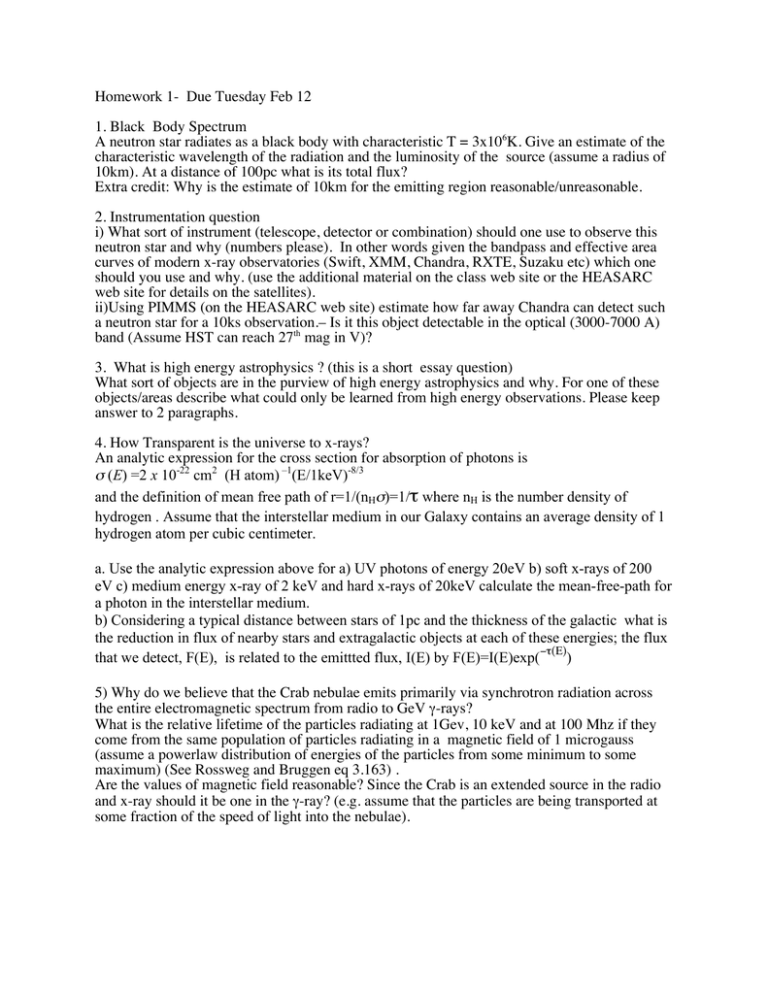
Homework 1- Due Tuesday Feb 12 1. Black Body Spectrum A neutron star radiates as a black body with characteristic T = 3x106K. Give an estimate of the characteristic wavelength of the radiation and the luminosity of the source (assume a radius of 10km). At a distance of 100pc what is its total flux? Extra credit: Why is the estimate of 10km for the emitting region reasonable/unreasonable. 2. Instrumentation question i) What sort of instrument (telescope, detector or combination) should one use to observe this neutron star and why (numbers please). In other words given the bandpass and effective area curves of modern x-ray observatories (Swift, XMM, Chandra, RXTE, Suzaku etc) which one should you use and why. (use the additional material on the class web site or the HEASARC web site for details on the satellites). ii)Using PIMMS (on the HEASARC web site) estimate how far away Chandra can detect such a neutron star for a 10ks observation.– Is it this object detectable in the optical (3000-7000 A) band (Assume HST can reach 27th mag in V)? 3. What is high energy astrophysics ? (this is a short essay question) What sort of objects are in the purview of high energy astrophysics and why. For one of these objects/areas describe what could only be learned from high energy observations. Please keep answer to 2 paragraphs. 4. How Transparent is the universe to x-rays? An analytic expression for the cross section for absorption of photons is σ (E) =2 x 10-22 cm2 (H atom) –1(E/1keV)-8/3 and the definition of mean free path of r=1/(nHσ)=1/τ where nH is the number density of hydrogen . Assume that the interstellar medium in our Galaxy contains an average density of 1 hydrogen atom per cubic centimeter. a. Use the analytic expression above for a) UV photons of energy 20eV b) soft x-rays of 200 eV c) medium energy x-ray of 2 keV and hard x-rays of 20keV calculate the mean-free-path for a photon in the interstellar medium. b) Considering a typical distance between stars of 1pc and the thickness of the galactic what is the reduction in flux of nearby stars and extragalactic objects at each of these energies; the flux −τ(Ε) that we detect, F(E), is related to the emittted flux, I(E) by F(E)=I(E)exp( ) 5) Why do we believe that the Crab nebulae emits primarily via synchrotron radiation across the entire electromagnetic spectrum from radio to GeV γ-rays? What is the relative lifetime of the particles radiating at 1Gev, 10 keV and at 100 Mhz if they come from the same population of particles radiating in a magnetic field of 1 microgauss (assume a powerlaw distribution of energies of the particles from some minimum to some maximum) (See Rossweg and Bruggen eq 3.163) . Are the values of magnetic field reasonable? Since the Crab is an extended source in the radio and x-ray should it be one in the γ-ray? (e.g. assume that the particles are being transported at some fraction of the speed of light into the nebulae).
